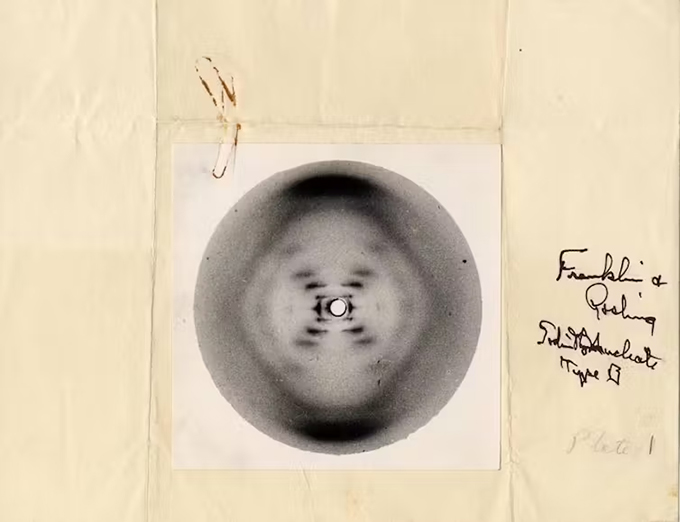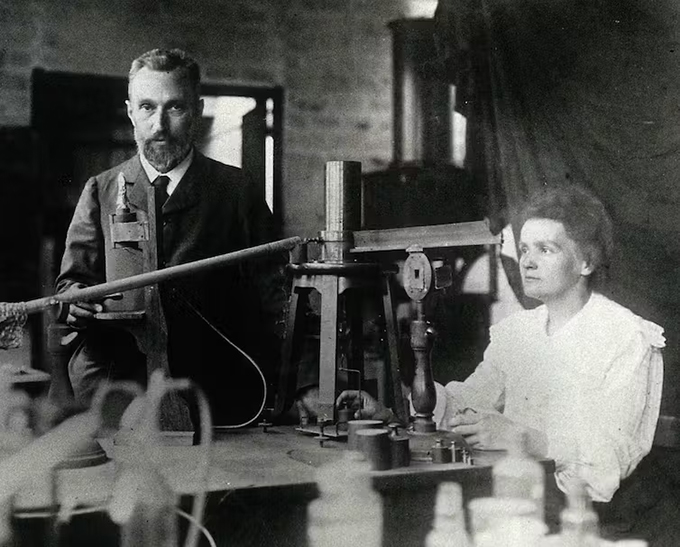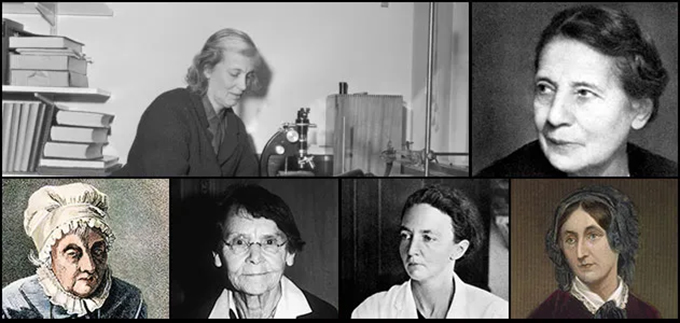Katalin Karikó is the brand new winner of the latest Nobel Prize in Medicine, along with Drew Weissman. For this Hungarian scientist, her personal and professional life were never a bed of roses. She emigrated to the United States, along with her husband and her daughter, with nothing more than about $1,200 hidden in the little girl’s teddy bear.
At the University of Pennsylvania, he worked hard. Despite this, she was demoted to lower positions, while her colleagues were promoted. She even, on some occasion, had to hear that her career was over. Her perseverance, her effort and her desire to fight kept him afloat. A chance meeting at the photocopier with immunologist Drew Weissman led to a fruitful collaboration between the two. He believed in her and she believed in him. Thus, many years later, they managed to have her work recognized with the highest award that a scientist can receive: the Nobel Prize.
Rosalind Franklin’s notebook was stolen… and the Nobel Prize
But it hasn’t always been like this. And if not, tell Rosalind Franklin. She was a key player in the discovery of the structure of the double helix of DNA, by taking the famous Photograph 51.

Photograph 51 is the first image of DNA obtained by X-ray diffraction in 1952. It was taken by Raymond Gosling, supervised by Rosalind Franklin. Oregon State University
However, the scientist had to endure rudeness, criticism and even jokes about her physical appearance, just for being a woman. Legend has it that her colleagues Watson and Crick discovered the structure of DNA after obtaining data from Rosalind’s laboratory notebook without her permission and under dubious methods, with the collaboration of her superior, Wilkins. Together they received the Nobel Prize in Medicine in 1962 , without Rosalind. In the Nobel Prize speech, they didn’t even mention Rosalind. Crick himself acknowledged, years later, that her discovery would have been impossible without the work of this great researcher.
Sadly, Rosalind died of cancer four years earlier, at age 37, possibly from continued exposure to radiation throughout her experiments. It’s a shame that Nobel Prizes are not awarded posthumously.
Curie, the first Nobel woman
Something similar was going to happen to Marie Curie. She would have been left without a Nobel Prize, if it had not been for her husband Pierre Curie. He was contacted by the Committee to receive the Nobel Prize in Physics in 1903 together with Becquerel, without summoning Marie. However, Pierre praised before the Committee the essential role that she had played in the investigations carried out. He told them that Marie was deserving of the award, even more than himself.
In this way, Marie Curie became the first woman to win a Nobel Prize. Years later, she won her second Nobel Prize, this time in Chemistry in 1911 . She was the first person to win two Nobel Prizes in different categories, and the only woman to do so to this day. Curiously, her daughter Irène Joliot-Curie also won the Nobel Prize in Chemistry in 1935 along with her husband. Really, a whole Nobel family.

The Curie couple. Wikimedia Commons/Unknown author , CC BY
Fight to get recognition
Katalin Karikó, Rosalind Franklin and Marie Curie are just three examples of great women who carried out an incessant fight for their work to be recognized in a world historically reserved for men.
The gender gap and the glass ceiling have always existed in science. Who does not have in mind the famous photograph of the Solvay Congress of 1927, with the scientific eminences of the time, such as Einstein, Schrödinger or Bohr? It can be taken as a game of visual acuity to find in the image the only woman present, Marie Curie, among the 28 men sitting there.
The saddest thing is that, in the 21st century, the gender gap in science is still clearly evident internationally. Between 1901 and 2023, only 65 of the 1,000 Nobel Prize winners have been women. This means that only 6% of these awards have been given to women. A striking fact, considering that they are the most recognized awards internationally.
However, it is not necessary to go to the highest level of recognition in science to find this gender gap. A recent study on the situation of young female researchers in Spain , carried out by the Women, Science and Innovation Observatory – attached to the Ministry of Science and Innovation – indicates that this gap still exists. The reasons proposed are varied, and range from structural aspects such as the configuration of research contracts or conciliation and maternity problems, to sexist environments and even situations of sexual and gender-based harassment.
Regarding the glass ceiling, although there are many women scientists, few reach management or leadership positions. According to another study carried out by the Ministry of Science, Innovation and Universities, only 36% of official teaching research staff are women. The gap is greater if the professorial staff is specifically valued, the highest echelon at the University, where only 22.5% of the positions are occupied by women.
To break that famous glass ceiling that prevents the professional development of women in the scientific field, we must encourage girls to choose careers related to science.
Karikó, Curie or Franklin must serve as an example of struggle and effort for all girls today. Thanks to their perseverance, they somehow managed to overcome that glass ceiling. We need more girls like them.
Author Bio: Laura Botello Morte is on the Teaching and Research Staff of the Faculty of Health Sciences at San Jorge University

